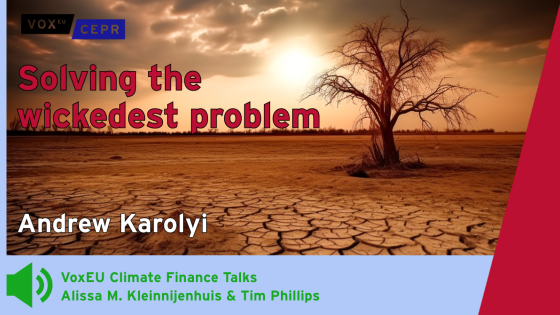The IMF will live with the legacy of its role in the European debt crisis for years — if not decades.
- One obvious part of this legacy will reside in the outcome of the crisis for the European periphery — more likely to be a lost decade than an example of efficient crisis management.
- Another part, which will be more important from a systemic perspective, is the fundamental change that took place in the rules of the game for the IMF’s role in crisis management.
Specifically, the decision to lend to Greece, Ireland and Portugal without having agreed on a convincing path back to a manageable level of debt was a substantial departure from agreed principles for the IMF. It was costly for Europe and, now as a precedent for the future, it will be costly for crises to come in other parts of the world (Schadler 2013).
Changing rules of the game
To understand the seriousness of this change in the rules of the game, it is useful to ask what is the value added of the IMF. What does the IMF bring to crisis management that would be absent, or present in a far less effective form, if the IMF did not exist? Financial resources to support countries in crisis are of course important. But since the 1950s, the IMF has been far more than a simple reserve pooling arrangement. It brings experience with financial crises around the globe and a significant degree of objectivity on the feasibility of any plan for restoring a manageable level of public debt (or in IMF parlance, debt sustainability).
Seen in the starkest light, three interactive components are at stake in devising such plans:
- The regimen of policy changes, encompassing, fiscal austerity, strengthening the banking system, and structural reform.
- A set of 5-10 year macroeconomic and debt forecasts taking into account the effects of the agreed policy changes.
- Restructuring public debt (in extreme circumstances).
All the policy changes and restructuring options have strong opposing interest groups, so pressure for optimistic forecasts — a gamble for redemption — is powerful. The country may get lucky and the optimistic forecasts turn out to be accurate or, in worse outcomes, the can is at least kicked down the road. The unique contribution of the IMF is its expertise on the efficacy of policy changes and its objectivity in preventing optimistic forecasts from obscuring the need for stronger policies or, in extreme circumstances, debt restructuring.
Protecting this role for the IMF has long been a concern of global policymakers. The spate of severe crises in the 1990s raised questions about whether the IMF had adequate protection from pressures to gamble for redemption.
In 2003, agreement was reached on a set of four criteria that must be met for the IMF to extend exceptionally large loans. They require that:
- the country experiences exceptional balance-of-payments pressures;
- a “rigorous and systematic analysis indicates that there is a high probability that the country’s “public debt is sustainable in the medium term”;
- “the country has prospects for gaining or regaining access to private capital markets within the timeframe when Fund resources are outstanding”; and
- the country’s policy programme “provides reasonably strong prospects of success” (IMF 2002).
The four criteria are excellent public policy. They avoid arbitrary quantitative limits and instead specify parsimonious conditions that are fully consistent with the IMF’s mandate to provide financing only as a bridge to a country’s return to normal market financing.
Yet in 2010 in the first serious test of the criteria, the IMF failed. Under pressure from European members, in the highly unusual Troika arrangement (Pisani-Fierry et al. 2012), the IMF introduced the possibility of a waiver of the second of the four criteria: in cases where there is a risk of international spillover effects, there does not have to be a high probability of debt sustainability (IMF 2010). This waiver was invoked for Greece (and subsequently Ireland and Portugal), allowing the Fund to sidestep its responsibility to insist on measures (specifically, more money from the EU and/or an early restructuring of private debt) that were essential to rendering debt sustainable over the medium term. Debt restructuring — widely seen from the outset as inevitable by commentators outside the IMF (see, for example, Eichengreen 2010) — was kicked down the road (and ultimately occurred two years after the first disbursement of the IMF loan). As the amendment of the criteria was permanent, it has revised the rules of the game for future crises.
Even the application of the waiver in the euro crisis has been slipshod. All crises severe enough to require exceptionally large IMF lending have international systemic spillovers. This is virtually definitional. The critical question is which course of action is likely to minimise them. But the IMF has provided no comparative analysis of likely spillover effects for different courses of action. At a minimum, the IMF needed to consider and present estimates of adverse spillover effects in scenarios for alternative policy strategies — for example in Greece, of a scenario with early restructuring, a gamble for redemption (the actual strategy adopted), and debt relief from other EU members. Without such analysis, the bar for invoking the systemic waiver criterion is absurdly low.
Unfortunately for Europe, the use of the waiver, attractive as it was from a short-term perspective, cost dearly. The fundamental problem in Greece — an unsustainable debt burden even if the programme of policies had been pursued to the letter — was not addressed, leaving financial markets with excessive uncertainty about the end-game of the crisis (would there be more money from Europe or restructuring?) and allowing nimble investors to reduce exposures. Portugal may get by without a restructuring, but will pay for the prolonged uncertainty with a longer recovery than was necessary. Ireland appears to be on the mend, but again with more severe costs for economic activity than if the debt overhang had been addressed at the outset.
These poor decisions to support countries in the absence of debt sustainability will have even longer-term consequences. The Fund has effectively jettisoned the four criteria and now will enter the next debt crisis with no procedural anchor. In short, the IMF has no formal mandate requiring that a rigorous analysis find a high probability that debt sustainability will be restored. Without a formal limit on its discretion, the IMF is fair game for any national or regional political interests intent on securing IMF support to support a gamble for redemption and delay restructuring when it is needed. Interim periods of uncertainty with IMF funding to support fleeing investors will inevitably be as costly as they have been in Europe.
Fixing things
What is the way forward?
- First, reinstate an anchor to the IMF when it lends into severe debt crises.
Restore the essential principle — without which IMF lending does not make sense — that the programme of policies to which a severely indebted sovereign commits provides a high probability that the country will return to a manageable debt position within the life of the IMF loan.
- Second, start the process of agreeing on procedures and institutions for debt standstills and restructuring when debt sustainability during the life of the programme is not highly likely.
- Third, make arrangements for a very short-term facility — ideally funded by national central banks — for emergency financing when failing to meet immediate debt servicing obligations would be unduly costly.
Such circumstances are unusual, but can arise — for example, if a crisis were to unfold exceptionally quickly and in unpredictable circumstances or, as in Greece, institutional arrangements (ECB rules on accepting paper of downgraded sovereigns) meant that a standstill before those arrangements were changed would have inflicted severe costs on the economy. The goal would be to prevent such short-term exigencies from ensnaring the IMF in commitments to fund 3-4 year programmes without good prospects for debt sustainability.
- Fourth, the euro crisis raised profound questions about the independence of the IMF – how much independence is essential for the IMF to play a useful role in a crisis and how to prevent the subversion of that role in the euro crisis from becoming the new norm.
These questions go well beyond consideration of how the “rules of the game” should be crafted. They go to the heart of the optimal decision-making structure of an institution whose effectiveness can easily be compromised by political pressures. The experience in Europe reinforces the arguments for a serious rethink of the management and decision-making structure of the IMF.
References
Eichengreen, B (2010), “It’s not too late for Europe”, VoxEU, 7 May 2010.
IMF (2002), Access Policy in Capital Account Crises, July 29.
IMF (2010), Greece: Staff Report on Request for Stand-By Arrangement, IMF Country Report 10/110, May.
Pisani-Ferry, J, A Sapir and G Wolff (2013), EU-IMF Assistance to Euro-Zone Countries: An Early Assessment, Bruegel Institute, Volume XIX, May.
Schadler, S (2013), “Unsustainable Debt and the Political Economy of Lending: Constraining the IMF’s role in Sovereign Debt Crises”, CIGI Papers, No 19, October.



